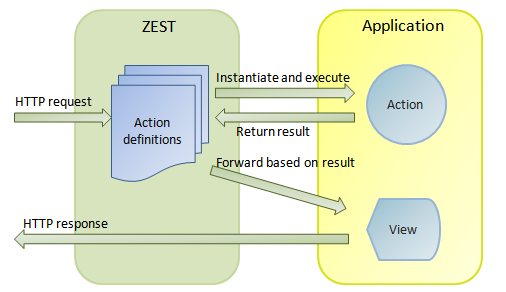Overview"
From Documentation
m |
m (correct highlight (via JWB)) |
||
| (2 intermediate revisions by one other user not shown) | |||
| Line 9: | Line 9: | ||
The use of ZEST is straightforward: | The use of ZEST is straightforward: | ||
| − | # Configure < | + | # Configure <code>WEB-INF/web.xml</code> to specify ZEST as a filter |
| − | # Configure < | + | # Configure <code>WEB-INF/zest.xml</code> to specify the definitions of actions |
# Implement the action as a Java class to handle the request | # Implement the action as a Java class to handle the request | ||
# Implement the view in any technology, such as ZK and JSP, you prefer to show up the result | # Implement the view in any technology, such as ZK and JSP, you prefer to show up the result | ||
| + | |||
| + | '''Related Links:''' | ||
| + | * [http://code.google.com/p/zest/ ZEST Home] | ||
| + | * [http://code.google.com/p/zest/downloads/list Downloads] | ||
| + | * [http://www.zkoss.org/javadoc/latest/zest/ Javadoc API] | ||
=Version History= | =Version History= | ||
Latest revision as of 02:57, 18 January 2022
ZEST is a lightweight Web framework that enables MVC and REST architectural pattern.
ZEST is installed as a HTTP filter to intercept each HTTP request. Once a HTTP request is received, ZEST looks for the matched action, instantiate and invoke it, and then forward to the view based on the result as illustrated below.
The use of ZEST is straightforward:
- Configure
WEB-INF/web.xmlto specify ZEST as a filter - Configure
WEB-INF/zest.xmlto specify the definitions of actions - Implement the action as a Java class to handle the request
- Implement the view in any technology, such as ZK and JSP, you prefer to show up the result
Related Links:
Version History
| Version | Date | Content |
|---|---|---|
